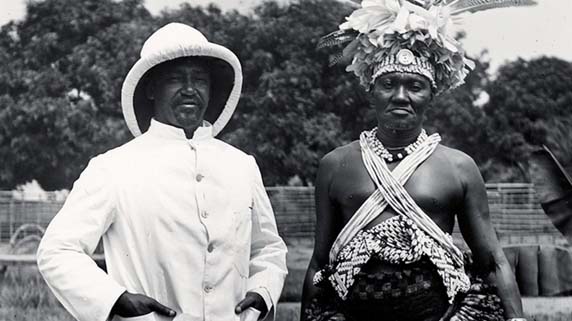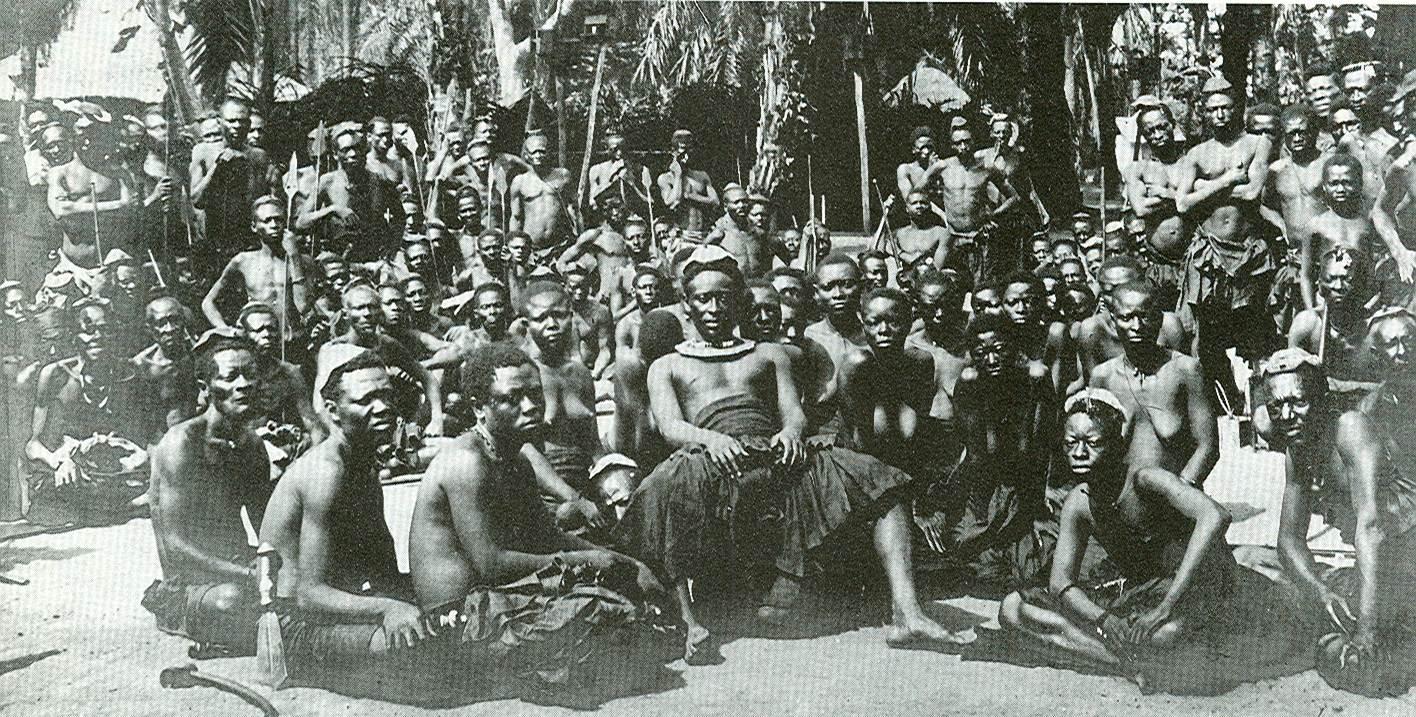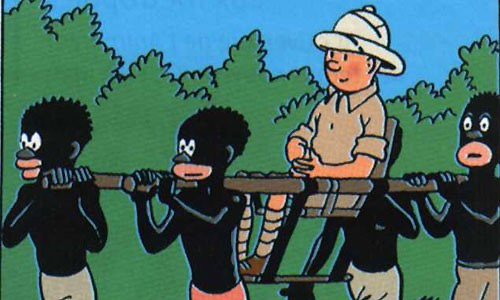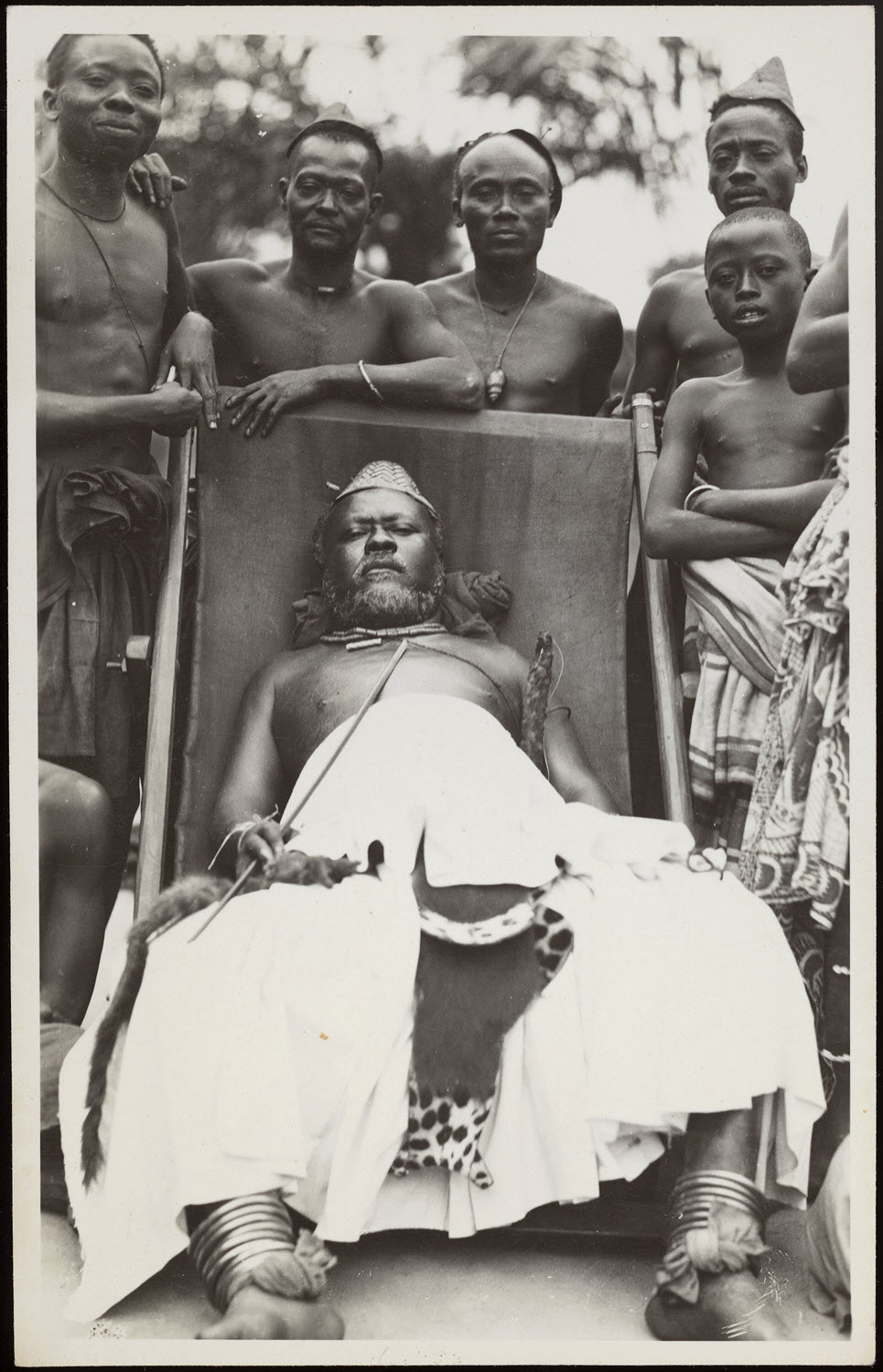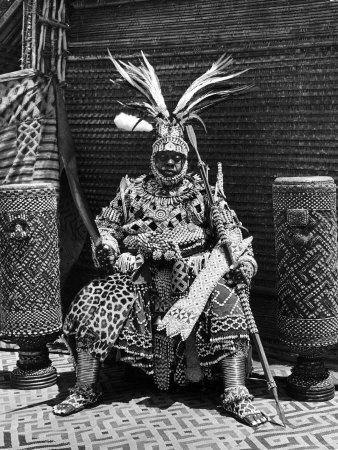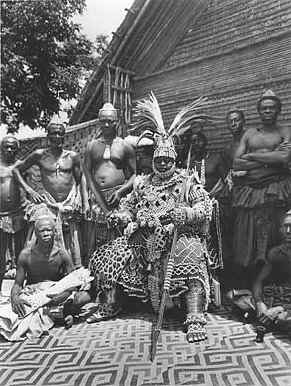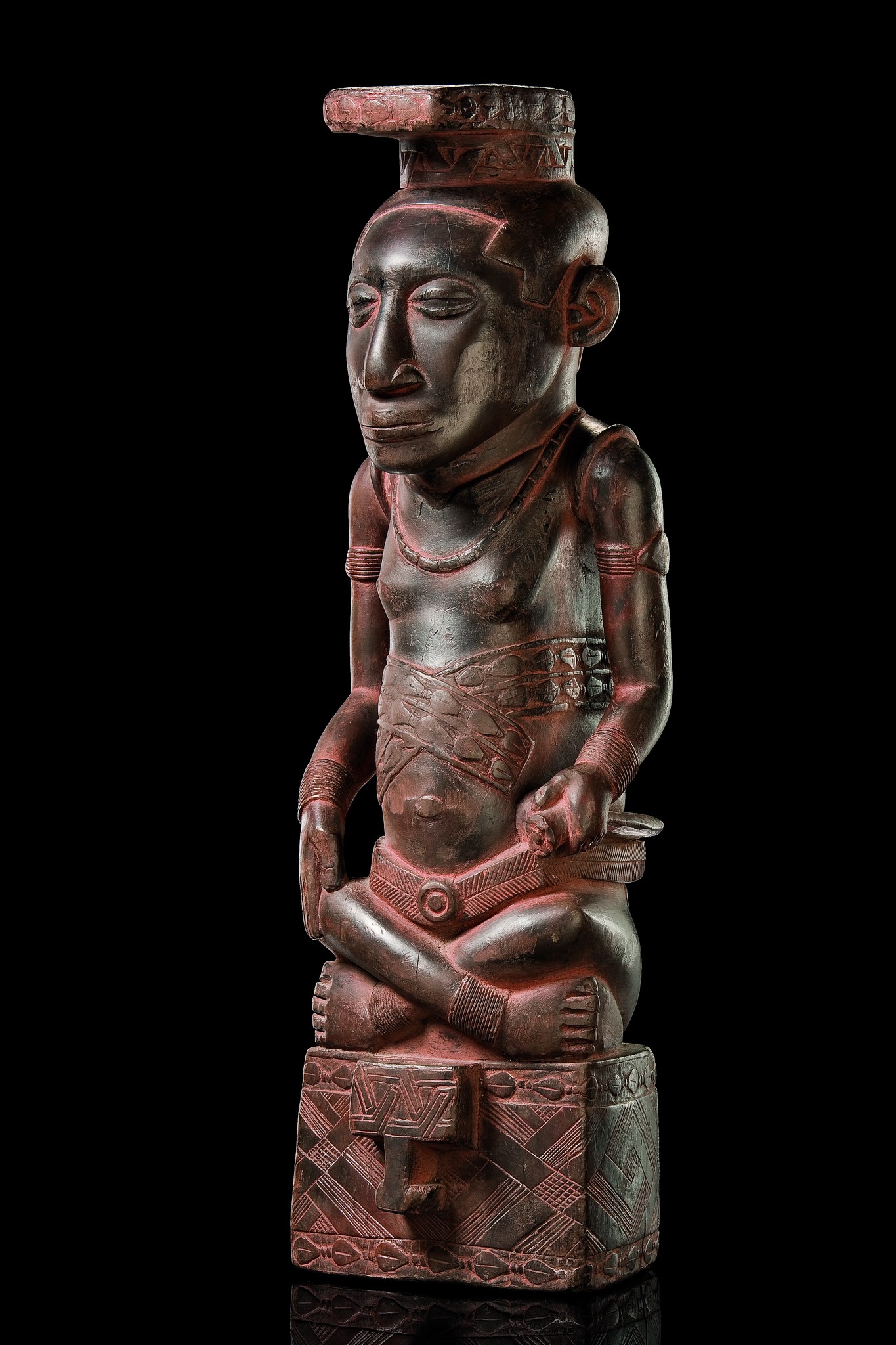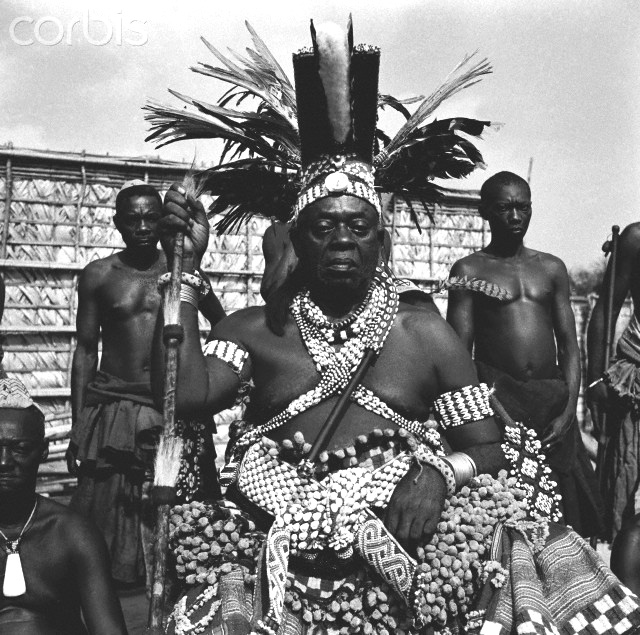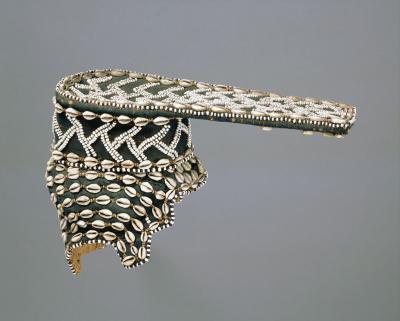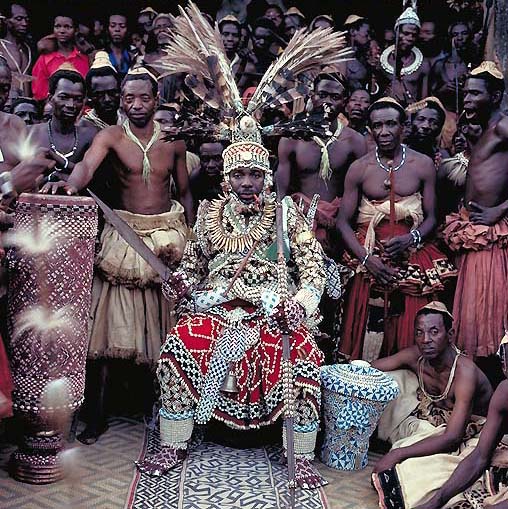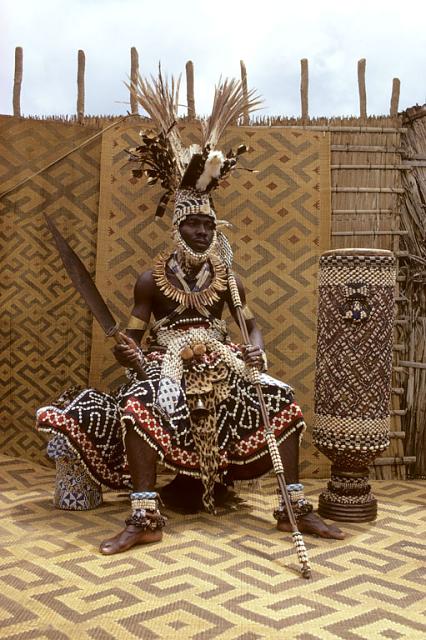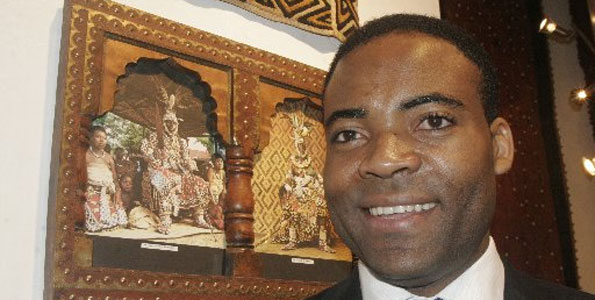Article is taken from the Business Daily (a Nation Media Group Monday April 1, 2013 Photo/Elvis Ogina Prince Kwete of Bakuba Kingdom in DR Congo poses next to his father’s photo during the 40th Anniversary of African Heritage at the Alliance Francaise, Nairobi, last week. By MARGARETTA WA GACHERU / Posted Thursday, April 19 2012 at 19:07 
Coming from a kingdom that dates back nine centuries and is nestled deep in the heart of the Central African rainforest in the Congo, Prince Guy Kwete is next in line to succeed his father, the King of Kuba, KotMbweki III. 
The issue of succession is a sensitive topic in Kubaland since Kwete is his father’s third born son. But he is also the first son to study abroad, first in Paris, then in the US at the University of Southern California, and most recently in the UK where he studied International Relations at the London School of Economics.
Kwete is a thoroughly modern prince who feels at home anywhere in the world, not only because he’s been groomed from birth to be African nobility, but also because wherever he goes, members of the royal entourage accompany him, ensuring his protection as well as the preservation of the age-old Kuba culture. 
Kuba culture is so strong and deep and democratically structured, says the prince, that it withstood the onslaught of the Belgians, the corrupting influence of Mobutu Sese Seko and multiple threats of conflict that have historically troubled the Democratic Republic of Congo (DRC), formerly known as Zaire.
It was only in 1997 when marauding militias came to Kubaland and ransacked the kingdom that tragedy hit these gentle, peace loving people who are yet to fully recover from the cruel realities of war. 
Yet in spite of ravages of war, the Kuba people have continued to create their classic raffia textiles, which historically inspired modern artists like Matisse and Picasso and helped shape the 20th century modernist sensibility.
Prince Kwete recently witnessed the resilience of his people’s culture when he escorted a crew of camera women all around Kubaland. 
Having travelled throughout the kingdom with his father every year since he could walk, Kwete was accustomed to the rousing royal ceremonial receptions he received when he took photographers Carol Beckwith, Angela Fisher and independent filmmaker Kire Godal on a three week tour of countless villages on the far edges of Kubaland late last year. 
The Kuba people are understandably protective of their culture, given their experience of foreigners from the West, especially those, like the Belgians, British, French and Americans, who walked away with the Kuba’s sacred ancestral sculptures. Each stolen hand-carved statue, known as a ndop represents one of Kuba’s more than 125 kings.
Yet Western museums take pride in showing off the elements of Kuba culture they managed to swipe from the royal coffers. The British Museum in London, for instance, has four ndops, the Metropolitan Museum of Art in New York has one, and according to the prince, ndops are also on display in Paris, Brussels and even Oslo, Norway.
Enlightened
Balancing tradition and modernity has been one of the living legacies that Kwete’s 67-year-old father is leaving to his son -- a challenge Kwete accepts wholeheartedly. His main aim is to promote sustainable development of his kingdom through education, enlightened policies and partnerships with governments and global bodies that can help to preserve Kuba’s culture and identity. 
Currently based in Brussels, Kwete is constantly in talks either with the European Union, United Nations agencies or people like Beckwith, Fisher and Godal who plan to promote Kuba culture through their photography and film.
Prince Kwete also accompanied the female trio to Kenya last week to be part of the opening of African Heritage’s 40th Anniversary celebrations, including the launch of Beckwith and Fisher’s latest book on the Dinka of Southern Sudan. 
With plans to include images of Kuba culture in their forthcoming volumes of African Ceremonies (Vol. 1 and 2 already exist), Beckwith and Fisher have been intrigued by the Kuba kingdom for almost as long as they have been making photography books on indigenous African cultures, that is, since the 1970s.
It was their chance encounter with Kwete at London’s October Gallery that led to the life-transforming experience of their traveling by Land Rover across Kubaland and witnessing the incredibly elaborate costuming, customs and ceremonies of the Kingdom.
Meanwhile, Kwete has also set up his own school and charity catering for the needs of orphaned or abandone dchildren.
L’area stands for Áction recuperation enfant abondonnee and is a reflection of the rapidly changing needs of the Kuba people. 
article taken from Magazines - © businessdailyafrica.com / Posted Thursday, April 19 2012 at 19:07 By MARGARETTA WA GACHERU
H.R.H. Prince Kwete of the Kuba Kingdom, DR Congo
Home / About / Friends of Africa International Advisory Board / H.R.H. Prince Kwete of the Kuba Kingdom, DR Congo
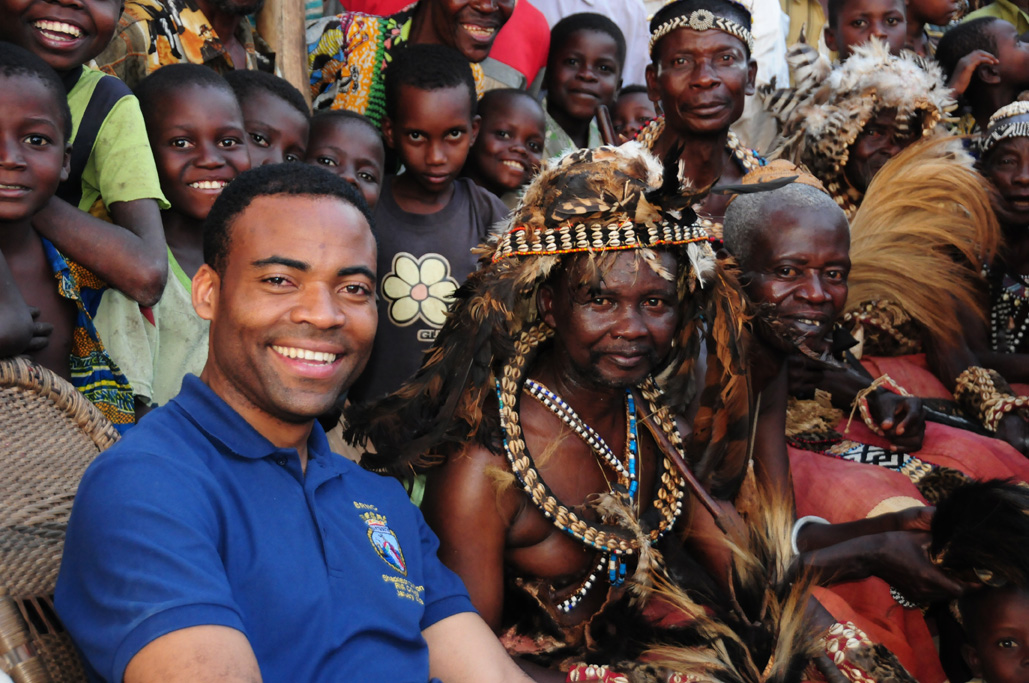
Friends of Africa International Advisory Board Member
Hon. Guy Kwete, Prince of the Kuba Kingdom, D.R. Congo
DR Congo – Prince Kwete is the son of King Kot aMbweki III, the 125th of the Kuba Kingdom, a monarchy located in the heart of the Democratic Republic of Congo within the southern boundary of the world’s second largest rainforest. Prince Kwete is also founder and chief executive officer of Central Africa Business Cooperative and the visionary behind The Kuba Kingdom Project, an initiative designed to balance sustainable modernization with conservation and cultural preservation in the DR Congo. The project is focused on creating programs and incentives to protect the resources in the dense virgin rainforest and via education, healthcare and agriculture programs, empower Bakuba people to retain their cultural heritage while becoming self-reliant and prosperous. Prince Kwete received his formal primary education in Paris, undergraduate degree in the U.S. at the University of Southern California, and masters degrees in International Relations at the U.K. at the London School of Economics. 
Return to International Advisory Board
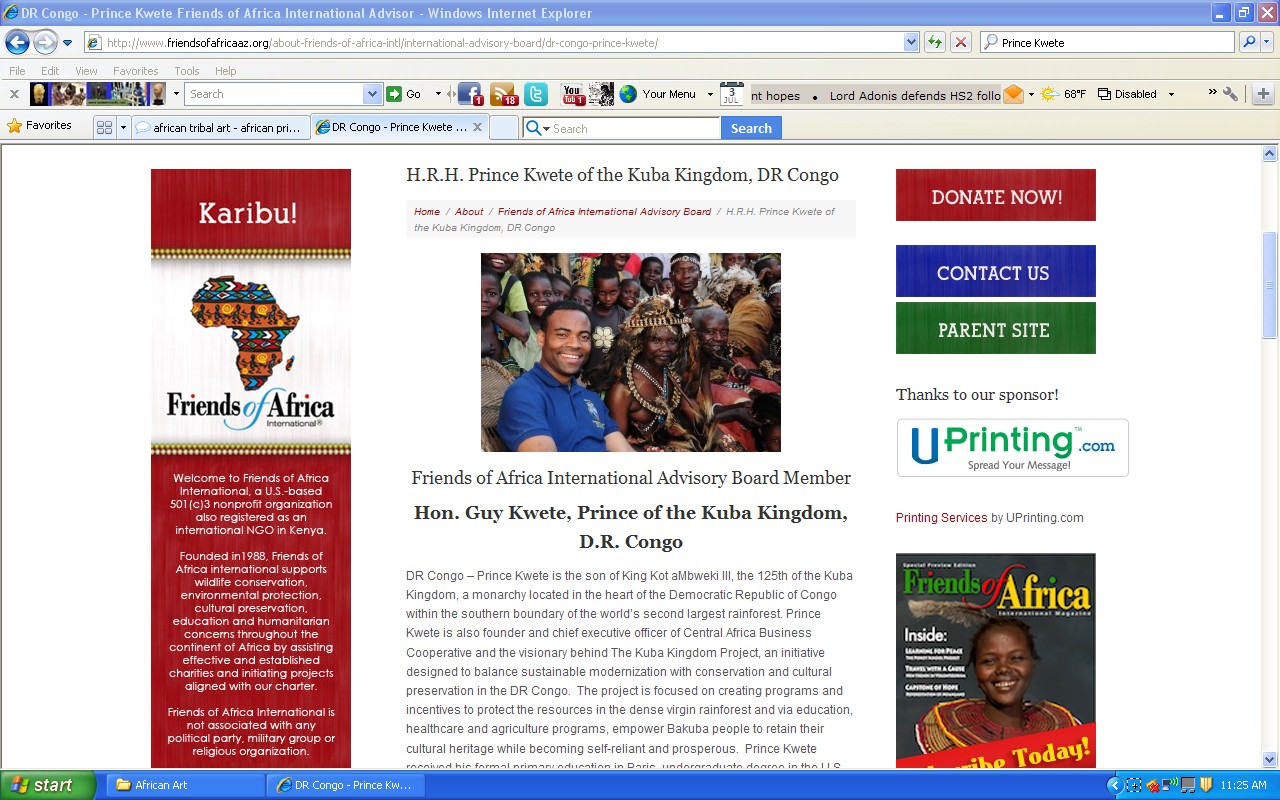
D.R. Congo: The Kuba Kingdom Project
Home / Current Projects / Current Page
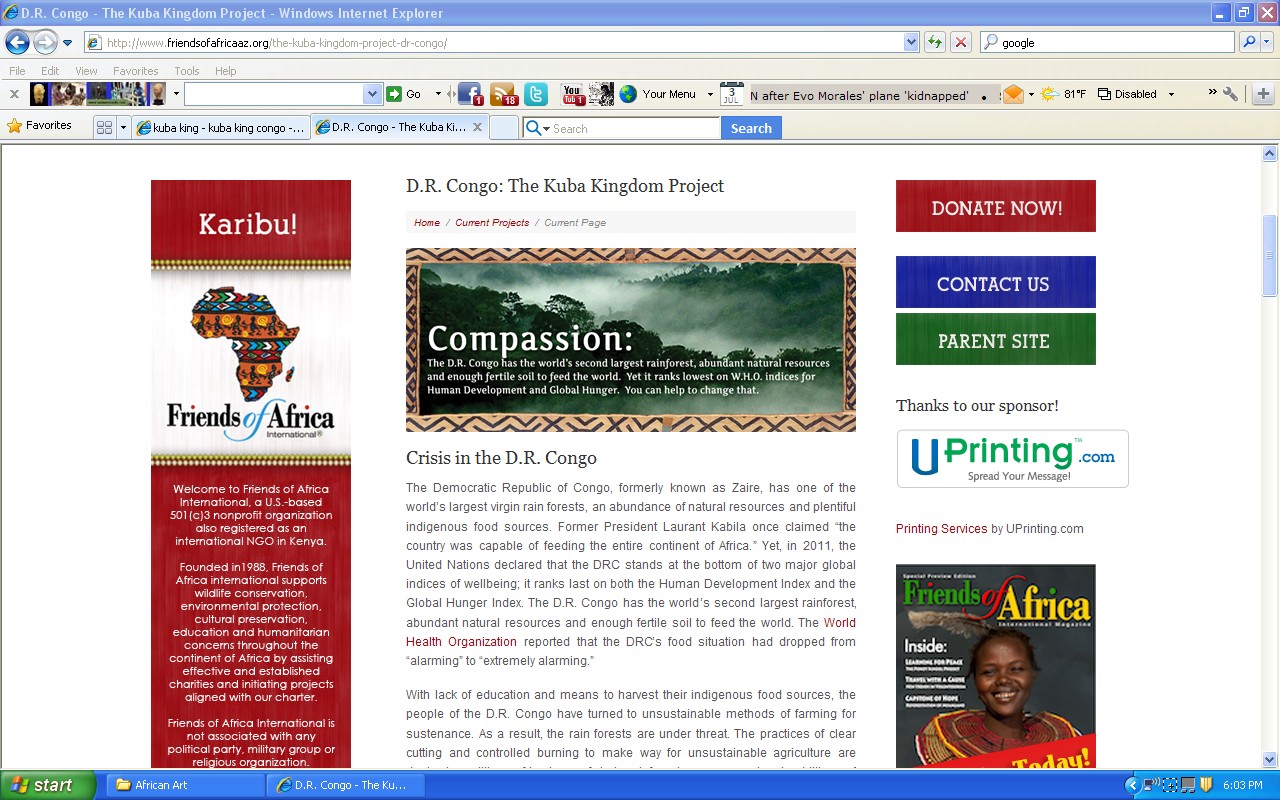
Crisis in the D.R. Congo
The Democratic Republic of Congo, formerly known as Zaire, has one of the world’s largest virgin rain forests, an abundance of natural resources and plentiful indigenous food sources. Former President Laurant Kabila once claimed “the country was capable of feeding the entire continent of Africa.” Yet, in 2011, the United Nations declared that the DRC stands at the bottom of two major global indices of wellbeing; it ranks last on both the Human Development Index and the Global Hunger Index. The D.R. Congo has the world’s second largest rainforest, abundant natural resources and enough fertile soil to feed the world. The World Health Organization reported that the DRC’s food situation had dropped from “alarming” to “extremely alarming.” 
With lack of education and means to harvest their indigenous food sources, the people of the D.R. Congo have turned to unsustainable methods of farming for sustenance. As a result, the rain forests are under threat. The practices of clear cutting and controlled burning to make way for unsustainable agriculture are destroying millions of hectares of virgin rainforest every year, releasing billions of tons of carbon emissions into the world’s atmosphere, which scientists believe is exacerbating climate change.
We endeavor to change that.
View the digital Kuba Kingdom Project brochure:
A Plan for Sustainable Modernization
The Kuba Kingdom Project is a collaborative, grass-roots initiative that combines innovative business enterprise and nonprofit humanitarian efforts with a multi-dimensional approach to sustainable economic growth. Its programs are designed to empower Bakuba people to be self-reliant via unique partnerships between communities, entrepreneurs, business investors and nonprofit organizations. Key components of The Kuba Kingdom Project include education, conservation, cultural preservation, enterprise and collaboration. Each component employs sustainability, social equity and self-reliance as guiding principles, which ultimately endeavors to inspire stewardship over natural resources and provide economic prosperity that fosters healthy communities, peaceful coexistence and vastly improved quality of life. The DRC has potential to become the model for sustainable economic growth in Africa, but it is still recovering from civil war conflicts that have plagued its perimeters for more than twenty years. 
While the Kuba Kingdom itself has remained relatively remote from the conflict zones, Bakuba people have been faced with worsening economic consequences of war and a growing population due to the influx of refugees. Once considered the “breadbasket of the Congo,” the Kuba Kingdom,located at the southern most perimeter of the equatorial rainforest, has an abundance of untapped natural resources and mineral-rich soils ideal for agriculture. As these resources become more scarce globally, prospectors from developed nations are converging on the region to exploit its untapped resources. Without strategic sustainability actions taken now, the D.R. Congo faces unfettered exploitation that could lead to accelerated destruction of the virgin rainforest with consequential devastation of its ecosystems and human populations depending upon its survival. 
Mitigating Crisis with Opportunity
In 2011, Bakuba Prince, Guy Kwete, son of Kot aMbweki III, the 125th King of Kuba, hosted a photographic excursion to document ancient Kuba traditions with National Geographic filmmaker Kire Godal and photographers, Carol Beckwith and Angela Fisher, authors of the world-renowned African Ceremonies books, During the excursion, they observed heightened humanitarian and environmental challenges, which prompted later studies with scientists, strategists and field experts. In response to their findings, Prince Kwete and Godal formed the Central Africa Business Cooperative (CAB) and created the Kuba Kingdom Project, a multi-phase plan to abate existing crises by creating opportunity for sustainable modernization. Under the auspices of CAB, and in partnership with Friends of Africa International, Prince Kwete has opened the Kuba Kingdom for sustainable enterprise. They are currently seeking investment capital and charitable donations to fund humanitarian relief, education programs, business opportunities and sustainable infrastructure that will protect the rain forests, foster economic growth and empower Bakuba people to become both self-reliant and prosperous. 
About the Kuba Kingdom Arts and Culture
In the West, very little is known about the Kuba Kingdom, however its whimsical sculptures and textiles featuring distinctive geometric patterns are famous throughout the world. Modern Cubism, which derived its name from the word, “Kuba,” was highly influenced by Kuba arts, eluded to in works by Cubist master artists including Picasso and Matisse. Due to their rarity in the West, Royal Kuba textiles and artifacts are highly sought by western collectors and occupy permanent exhibition halls in prominent art museums in New York, London, Brussels and Paris.
Traditionally, characteristics of Royal Kuba Cloth patterns woven with raffia, delicate embroidery, beads and appliqued fabrics were thought to be identifiable with ancestors, so some families accumulate the rare cloths that have been passed down for generations. The family textiles are also used in formal, traditional ceremonies, as are heirloom masks and beaded adornments. 
While much of D.R. Congo culture was influenced by Belgian colonialists, the culture and tradition of the Kuba Kingdom has remained relatively un-affected and the monarchy intact. Despite the economic hardships in the D.R. Congo, traditional Bakuba customs remain embedded in today’s culture. Due to the prolonged conflict throughout the Congo, few outsiders have ever witnessed the rich cultural heritage of the Kuba Kingdom.
A Call to Action
Funding is urgently needed to create grass roots opportunity for sustainable agriculture, health care and education. Friends of Africa International is currently accepting donations that will provide immediate solutions to create programs about sustainable agriculture to eradicate hunger, prevent deforestation, empower self-reliance, and foster stewardship of the virgin rainforest and its resources. Phase One of the Kuba Kingdom Project includes sustainable fisheries, a radio education network, health clinics and workshops, scientific studies on the rainforest and deforestation and community conservation programs. 
Kwete's Involment in Film Production of Kuba Culture
Kire Godal Filmmaker -
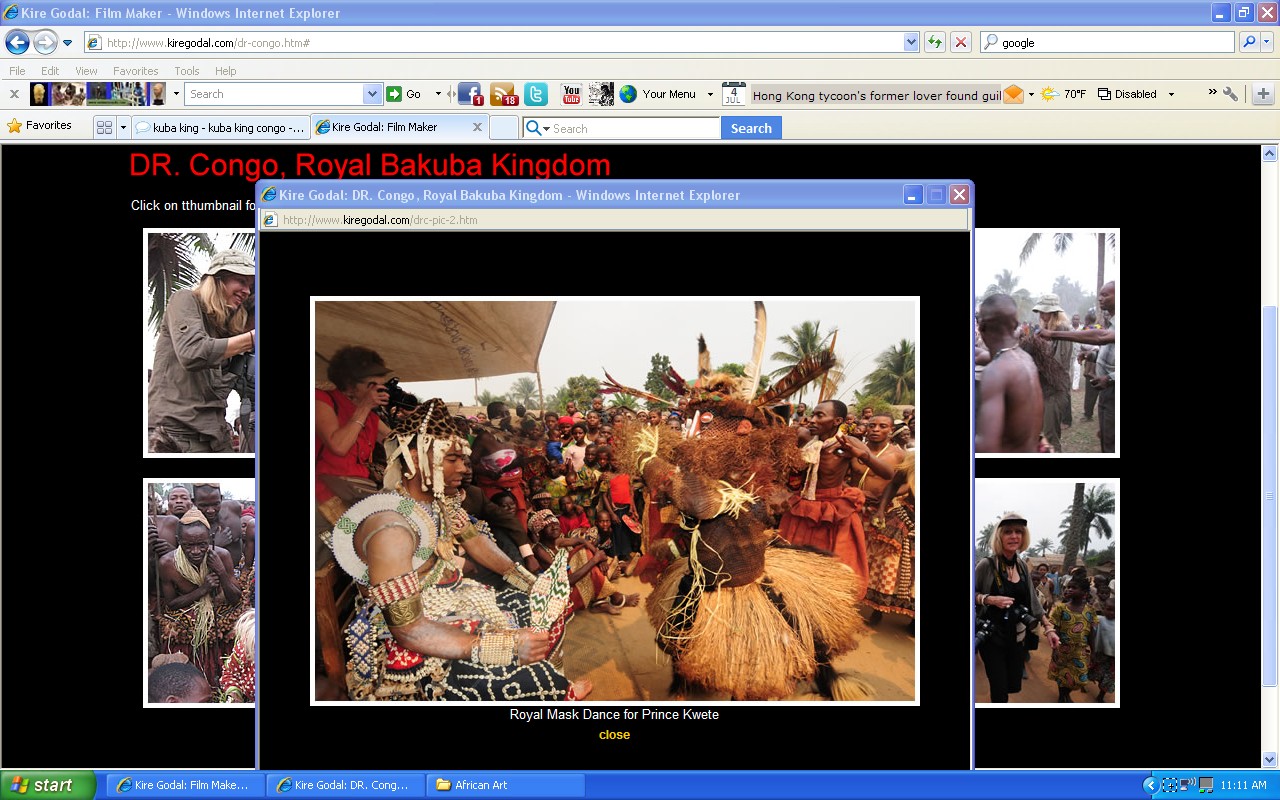
| 